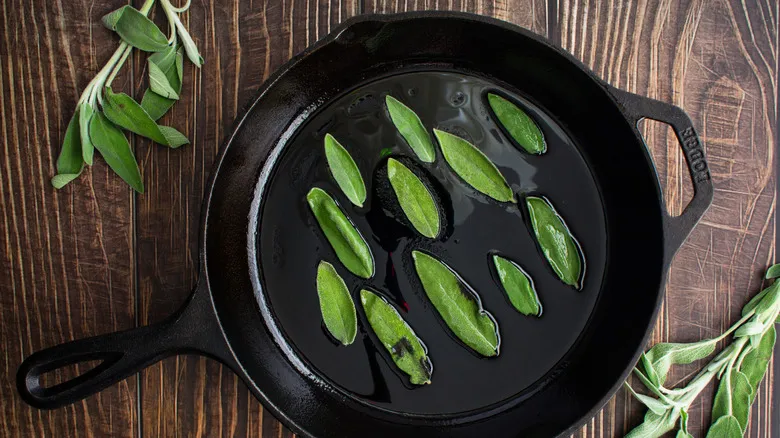How to create gourmet-tasting sage-infused olive oil

If you want to create a richly sage-infused olive oil with a bit more purpose, the method is straightforward. Start by washing and thoroughly drying your sage leaves, then gently rub them between your fingers to release their essential oils. Place the leaves in an airtight container and cover them with high-quality extra-virgin olive oil. For an infused oil meant for special dishes and occasions, it's advisable to choose a premium olive oil. Store the jar in a cool, dark pantry for at least a week; the longer it sits, the more intense the flavor will become, but avoid letting it steep for more than a couple of weeks. This way, you'll have perfectly preserved sage leaves to use individually in your cooking, along with a flavorful olive oil that adds depth to your recipes.
If you have a recipe that calls for sage-infused oil but are pressed for time, you can expedite the process by gently sautéing sage leaves in olive oil over low heat. This technique will impart a strong sage flavor to your dish, although it won't provide the nuanced depth that comes from a longer infusion.
Delicious ways to use your preserved sage and infused oil

Sage leaves infused with olive oil can enhance your culinary creations. When finely chopped, EVOO-infused sage makes a delightful addition to compound butter. This sage butter is ideal for blending into mashed potatoes, dolloping on sweet potato dishes, or spreading on dinner rolls.
Additionally, sage leaves coated in oil can be easily crisped in a frying pan. Once cooled, the crunchy, frizzled sage leaves make a flavorful topping for pasta. Alternatively, chop them up and mix them into toasted breadcrumbs for a seasonal twist that complements your favorite baked macaroni and cheese or a kale Caesar salad.
Sage-infused olive oil is also delicious on its own, making it a great choice for dipping bread as an antipasto. You can use it in any recipe that calls for regular olive oil: in salad dressings, drizzled over roasted vegetables, or as a sautéing oil for various ingredients.
Recommended

How To Store Stinky Cheese To Keep It Fresh And Its Smell Contained

The One Frozen Veggie Vegans Should Always Have In The Freezer

The Best And Worst Types Of Meat To Cook In The Air Fryer

How Long Can You Safely Leave Your Groceries In The Car?
Next up

